
December and January's diversity display is centered on the concepts of accessibility and inclusion, and celebrates the many people who are neurodiverse. Neurodiverse people and people with disabilities make up a large part of the population, yet their experiences are often invisible or hidden. Since the Americans with Disabilities Act of 1990 and other similar legislation across the world, the value of differing abilities has been acknowledged. However, much of the world and its activities remain inaccessible. We hope this display gives readers some insight, and helps them gain an understanding of how to better include and appreciate the differences in people they encounter in their everyday lives.
A physical book display is now available at the Libraries with the selection rotating weekly. Some of the eBooks listed below also have a physical listing. Please check the availability.
Special thanks to our Materials Processing Coordinator, Leah Zande, for compiling this list.
The Disability Rights Movement: From Charity to Confrontation
Fleischer, Doris Zames; Zames, Frieda (2011)
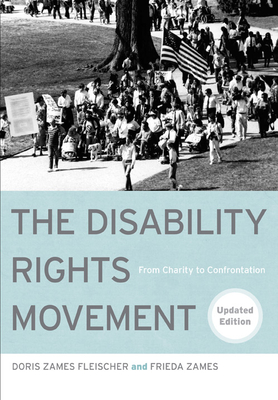 Based on interviews with almost a hundred activists, this book provides a detailed history of the struggle for disability rights in the United States. It is a complex story of shifts in consciousness and shifts in policy, of changing focuses on particular disabilities such as blindness, deafness, polio, quadriplegia, psychiatric and developmental disabilities, chronic conditions (for example, cancer and heart disease), AIDS, and of activism and policymaking across disabilities. Referring to the Americans with Disabilities Act as "every American's insurance policy," the authors recount the genesis of this civil rights approach to disability, from the almost forgotten disability activism of the 1930s, to the independent living movement of the 1970s, to the call for disability pride of the 1990s. Like other civil rights struggles, the disability rights movement took place in the streets and in the courts as activists fought for change in the schools, the workplace, and in the legal system. They continue to fight for effective access to the necessities of everyday life — to telephones, buses, planes, public buildings, restaurants, and toilets.
Based on interviews with almost a hundred activists, this book provides a detailed history of the struggle for disability rights in the United States. It is a complex story of shifts in consciousness and shifts in policy, of changing focuses on particular disabilities such as blindness, deafness, polio, quadriplegia, psychiatric and developmental disabilities, chronic conditions (for example, cancer and heart disease), AIDS, and of activism and policymaking across disabilities. Referring to the Americans with Disabilities Act as "every American's insurance policy," the authors recount the genesis of this civil rights approach to disability, from the almost forgotten disability activism of the 1930s, to the independent living movement of the 1970s, to the call for disability pride of the 1990s. Like other civil rights struggles, the disability rights movement took place in the streets and in the courts as activists fought for change in the schools, the workplace, and in the legal system. They continue to fight for effective access to the necessities of everyday life — to telephones, buses, planes, public buildings, restaurants, and toilets.
The history of disability rights mirrors the history of the country. Each World War sparked changes in disability policy and changes in medical technology as veterans without limbs and with other disabilities returned home. The empowerment of people with disabilities has become another chapter in the struggles over identity politics that began in the 1960s. Today, with the expanding ability of people with disabilities to enter the workforce and a growing elderly population, issues like longterm care are becoming increasingly significant at a time when HMOs are trying to contain health care expenditures. - Publisher's Description
Request this Title
Accessible America: A History of Disability and Design
Williamson, Bess (2019)
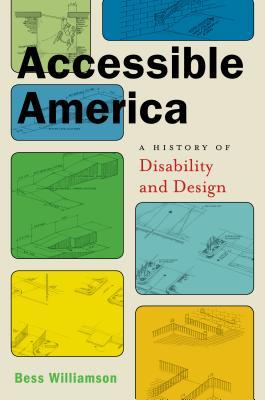 Have you ever hit the big blue button to activate automatic doors? Have you ever used an ergonomic kitchen tool? Have you ever used curb cuts to roll a stroller across an intersection? If you have, then you’ve benefited from accessible design―design for people with physical, sensory, and cognitive disabilities. These ubiquitous touchstones of modern life were once anything but. Disability advocates fought tirelessly to ensure that the needs of people with disabilities became a standard part of public design thinking. That fight took many forms worldwide, but in the United States it became a civil rights issue; activists used design to make an argument about the place of people with disabilities in public life.
Have you ever hit the big blue button to activate automatic doors? Have you ever used an ergonomic kitchen tool? Have you ever used curb cuts to roll a stroller across an intersection? If you have, then you’ve benefited from accessible design―design for people with physical, sensory, and cognitive disabilities. These ubiquitous touchstones of modern life were once anything but. Disability advocates fought tirelessly to ensure that the needs of people with disabilities became a standard part of public design thinking. That fight took many forms worldwide, but in the United States it became a civil rights issue; activists used design to make an argument about the place of people with disabilities in public life.
In the aftermath of World War II, with injured veterans returning home and the polio epidemic reaching the Oval Office, the needs of people with disabilities came forcibly into the public eye as they never had before. The US became the first country to enact federal accessibility laws, beginning with the Architectural Barriers Act in 1968 and continuing through the landmark Americans with Disabilities Act in 1990, bringing about a wholesale rethinking of our built environment. This progression wasn’t straightforward or easy. Early legislation and design efforts were often haphazard or poorly implemented, with decidedly mixed results. Political resistance to accommodating the needs of people with disabilities was strong; so, too, was resistance among architectural and industrial designers, for whom accessible design wasn’t “real” design.
Bess Williamson provides an extraordinary look at everyday design, marrying accessibility with aesthetic, to provide an insight into a world in which we are all active participants, but often passive onlookers. Richly detailed, with stories of politics and innovation, Williamson’s "Accessible America" takes us through this important history, showing how American ideas of individualism and rights came to shape the material world, often with unexpected consequences. - Publisher's Description
Request this Title
Out of the Horrors of War: Disability Politics in World War II America
Jennings, Audra (2016)
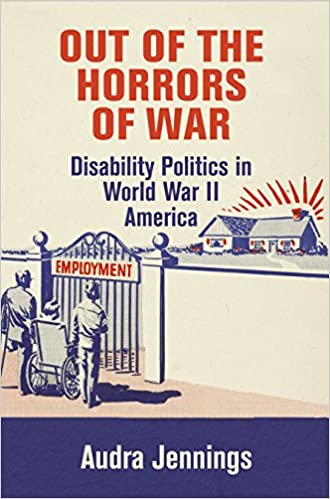 From workplace accidents to polio epidemics and new waves of immigration to the returning veterans of World War II, the first half of the twentieth century brought the issue of disability—what it was, what it meant, and how to address it—into national focus. Out of the Horrors of War: Disability Politics in World War II America explores the history of disability activism, concentrating on the American Federation of the Physically Handicapped (AFPH), a national, cross-disability organization founded during World War II to address federal disability policy. Unlike earlier disability groups, which had been organized around specific disabilities or shared military experience, AFPH brought thousands of disabled citizens and veterans into the national political arena, demanding equal access to economic security and full citizenship. At its core, the AFPH legislative campaign pushed the federal government to move disabled citizens from the margins to the center of the welfare state.
From workplace accidents to polio epidemics and new waves of immigration to the returning veterans of World War II, the first half of the twentieth century brought the issue of disability—what it was, what it meant, and how to address it—into national focus. Out of the Horrors of War: Disability Politics in World War II America explores the history of disability activism, concentrating on the American Federation of the Physically Handicapped (AFPH), a national, cross-disability organization founded during World War II to address federal disability policy. Unlike earlier disability groups, which had been organized around specific disabilities or shared military experience, AFPH brought thousands of disabled citizens and veterans into the national political arena, demanding equal access to economic security and full citizenship. At its core, the AFPH legislative campaign pushed the federal government to move disabled citizens from the margins to the center of the welfare state.
Through extensive archival research, Audra Jennings examines the history of AFPH and its enduring legacy in the disability rights movement. Counter to most narratives that place the inception of disability activism in the 1970s, Jennings argues that the disability rights movement is firmly rooted in the politics of World War II. In the years immediately following the war, leaders in AFPH worked with organized labor movements to advocate for an ambitious political agenda, including employer education campaigns, a federal pension program, improved access to healthcare and education, and an affirmative action program for disabled workers. "Out of the Horrors of War" extends the arc of the disability rights movement into the 1940s and traces how its terms of inclusion influenced the movement for decades after, leading up to the Americans with Disabilities Act of 1990. - Publisher's Description
Request this Title
Assistive Technology and Science
Bodine, Cathy (2013)
 This volume in The SAGE Reference Series on Disability explores issues involving assistive technology engineering and science. It is one of eight volumes in the cross-disciplinary and issues-based series, which incorporates links from varied fields making up Disability Studies as volumes examine topics central to the lives of individuals with disabilities and their families. With a balance of history, theory, research, and application, specialists set out the findings and implications of research and practice for others whose current or future work involves the care and/or study of those with disabilities, as well as for the disabled themselves. The presentational style (concise and engaging) emphasizes accessibility. Taken individually, each volume sets out the fundamentals of the topic it addresses, accompanied by compiled data and statistics, recommended further readings, a guide to organizations and associations, and other annotated resources, thus providing the ideal introductory platform and gateway for further study. Taken together, the series represents both a survey of major disability issues and a guide to new directions and trends and contemporary resources in the field as a whole. - Publisher's Description
This volume in The SAGE Reference Series on Disability explores issues involving assistive technology engineering and science. It is one of eight volumes in the cross-disciplinary and issues-based series, which incorporates links from varied fields making up Disability Studies as volumes examine topics central to the lives of individuals with disabilities and their families. With a balance of history, theory, research, and application, specialists set out the findings and implications of research and practice for others whose current or future work involves the care and/or study of those with disabilities, as well as for the disabled themselves. The presentational style (concise and engaging) emphasizes accessibility. Taken individually, each volume sets out the fundamentals of the topic it addresses, accompanied by compiled data and statistics, recommended further readings, a guide to organizations and associations, and other annotated resources, thus providing the ideal introductory platform and gateway for further study. Taken together, the series represents both a survey of major disability issues and a guide to new directions and trends and contemporary resources in the field as a whole. - Publisher's Description
Request this Title
Reading and Writing Disability Differently: The Textured Life of Embodiment
Bodine, Cathy (2013)
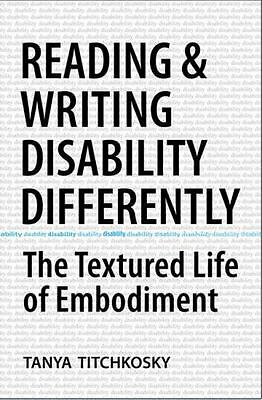 Mixing rigorous social theory with concrete analysis, "Reading and Writing Disability Differently" unpacks the marginality of disabled people by addressing how the meaning of our bodily existence is configured in everyday literate society.
Mixing rigorous social theory with concrete analysis, "Reading and Writing Disability Differently" unpacks the marginality of disabled people by addressing how the meaning of our bodily existence is configured in everyday literate society.
Tanya Titchkosky begins by illustrating how news media and policy texts reveal dominant Western ways of constituting the meaning of people, and the meaning of problems, as they relate to our understandings of the embodied self. Her goal is to configure disability as something more than a problem, and beyond simply a positive or a negative, and to treat texts on disability as potential sites to examine neo-liberal culture. Titchkosky holds that through an exploration of the potential behind limited representations of disability, we can relate to disability as a meaningful form of resistance to the restricted normative order of contemporary embodiment.
Incorporating a textual analysis of ordinary depictions of disability, this innovative study promises to represent embodied differences in new ways and alter our imaginative relations to the politics of the body. - Publisher's Description
Request this Title
Academic Ableism: Disability and Higher Education
Dolmage, Jay (2017)
 "Academic Ableism" brings together disability studies and institutional critique to recognize the ways that disability is composed in and by higher education, and rewrites the spaces, times, and economies of disability in higher education to place disability front and center. For too long, argues Jay Timothy Dolmage, disability has been constructed as the antithesis of higher education, often positioned as a distraction, a drain, a problem to be solved. The ethic of higher education encourages students and teachers alike to accentuate ability, valorize perfection, and stigmatize anything that hints at intellectual, mental, or physical weakness, even as we gesture toward the value of diversity and innovation. Examining everything from campus accommodation processes, to architecture, to popular films about college life, Dolmage argues that disability is central to higher education, and that building more inclusive schools allows better education for all. - Publisher's Description
"Academic Ableism" brings together disability studies and institutional critique to recognize the ways that disability is composed in and by higher education, and rewrites the spaces, times, and economies of disability in higher education to place disability front and center. For too long, argues Jay Timothy Dolmage, disability has been constructed as the antithesis of higher education, often positioned as a distraction, a drain, a problem to be solved. The ethic of higher education encourages students and teachers alike to accentuate ability, valorize perfection, and stigmatize anything that hints at intellectual, mental, or physical weakness, even as we gesture toward the value of diversity and innovation. Examining everything from campus accommodation processes, to architecture, to popular films about college life, Dolmage argues that disability is central to higher education, and that building more inclusive schools allows better education for all. - Publisher's Description
Request this Title
Mind and Body Spaces: Geographies of Illness, Impairment and Disability
Butler, Ruth; Parr, Hester (2005)
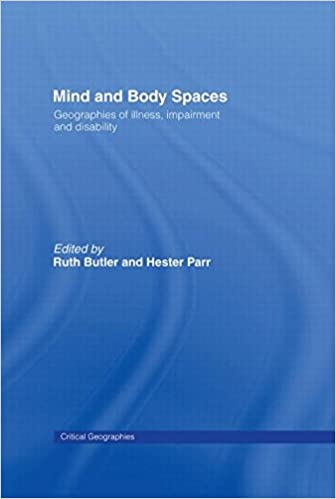 Just as geographies of race, gender, class and sexuality have drawn attention to how complex power relations in society are spatialized, so geographies of illness and impairment offer a deeper understanding of the world. In recent years geographers have increasingly engaged with both the theoretical debates surrounding ill or impaired bodies, and also the lived realities of ill/impaired experience. This text highlights international research (from Britain, USA, Canada, Australia) on bodily impairment, mental health and disabling social worlds. Its fusion of geographical analyses provide a commentary on a range of different spatial settings, including the nation, urban and rural spaces, work spaces, the caring institution, the street and the home, in which different minds and bodies are always located. The contributors discuss varied issues concerning physical impairment and mental health, ranging from historical conceptions of the body and behaviour to contemporary political activism. - Publisher's Description
Just as geographies of race, gender, class and sexuality have drawn attention to how complex power relations in society are spatialized, so geographies of illness and impairment offer a deeper understanding of the world. In recent years geographers have increasingly engaged with both the theoretical debates surrounding ill or impaired bodies, and also the lived realities of ill/impaired experience. This text highlights international research (from Britain, USA, Canada, Australia) on bodily impairment, mental health and disabling social worlds. Its fusion of geographical analyses provide a commentary on a range of different spatial settings, including the nation, urban and rural spaces, work spaces, the caring institution, the street and the home, in which different minds and bodies are always located. The contributors discuss varied issues concerning physical impairment and mental health, ranging from historical conceptions of the body and behaviour to contemporary political activism. - Publisher's Description
Request this Title
Music, Disability, and Society
Alex Lubet (2011)
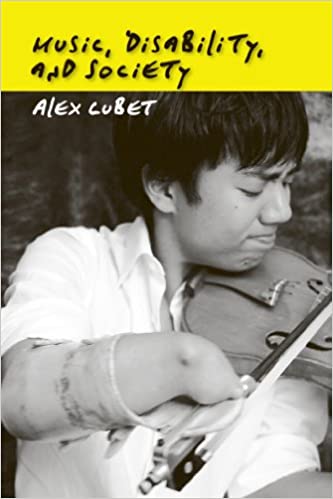 Musical talent in Western culture is regarded as an extraordinary combination of technical proficiency and interpretative sensitivity. In Music, Disability, and Society, Alex Lubet challenges the rigid view of technical skill and writes about music in relation to disability studies. He addresses the ways in which people with disabilities are denied the opportunity to participate in music.Elaborating on the theory of "social confluence," Lubet provides a variety of encounters between disability and music to observe radical transformations of identity. Considering hand-injured and one-handed pianists; the impairments of jazz luminaries Django Reinhardt, Horace Parlan, and "Little" Jimmy Scott; and the "Blind Orchestra" of Cairo, he shows how the cultural world of classical music contrasts sharply with that of jazz and how musicality itself is regarded a disability in some religious contexts. Music, Disability, and Society also explains how language difference can become a disability for Asian students in American schools of music, limiting their education and careers.Lubet offers pungent criticism of the biases in music education and the music profession, going so far as to say that culture disables some performers by adhering to rigid notions of what a musician must look like, how music must be played, who may play it, and what (if any) is the legitimate place of music in society. In "Music, Disability, and Society," he convincingly argues that where music is concerned, disability is a matter of culture, not physical impairment. - Publisher's Description
Musical talent in Western culture is regarded as an extraordinary combination of technical proficiency and interpretative sensitivity. In Music, Disability, and Society, Alex Lubet challenges the rigid view of technical skill and writes about music in relation to disability studies. He addresses the ways in which people with disabilities are denied the opportunity to participate in music.Elaborating on the theory of "social confluence," Lubet provides a variety of encounters between disability and music to observe radical transformations of identity. Considering hand-injured and one-handed pianists; the impairments of jazz luminaries Django Reinhardt, Horace Parlan, and "Little" Jimmy Scott; and the "Blind Orchestra" of Cairo, he shows how the cultural world of classical music contrasts sharply with that of jazz and how musicality itself is regarded a disability in some religious contexts. Music, Disability, and Society also explains how language difference can become a disability for Asian students in American schools of music, limiting their education and careers.Lubet offers pungent criticism of the biases in music education and the music profession, going so far as to say that culture disables some performers by adhering to rigid notions of what a musician must look like, how music must be played, who may play it, and what (if any) is the legitimate place of music in society. In "Music, Disability, and Society," he convincingly argues that where music is concerned, disability is a matter of culture, not physical impairment. - Publisher's Description
Request this Title
Human-Computer Interaction: Designing for Diverse Users and Domains
Sears, Andrew; Jacko, Julie (2009)
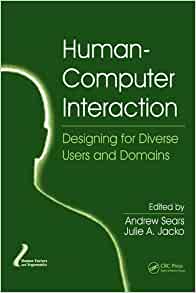 Hailed on first publication as a compendium of foundational principles and cutting-edge research, The Human-Computer Interaction Handbook has become the gold standard reference in this field. Derived from select chapters of this groundbreaking resource, "Human-Computer Interaction: Designing for Diverse Users and Domains" emphasizes design for users as such as children, older adults, and individuals with physical, cognitive, visual, and hearing impairments. It also discusses HCI in the context of specific domains including healthcare, games, and the aerospace industry.
Hailed on first publication as a compendium of foundational principles and cutting-edge research, The Human-Computer Interaction Handbook has become the gold standard reference in this field. Derived from select chapters of this groundbreaking resource, "Human-Computer Interaction: Designing for Diverse Users and Domains" emphasizes design for users as such as children, older adults, and individuals with physical, cognitive, visual, and hearing impairments. It also discusses HCI in the context of specific domains including healthcare, games, and the aerospace industry.
Topics include the role of gender in HCI, information technology and older adults, motor vehicle driver interfaces, and user-centered design in games. While human-computer interaction may have emerged from within computing, significant contributions have come from a variety of fields including industrial engineering, psychology, education, and graphic design. No where is this more apparent then when designing solutions for users as diverse as children, older adults, and individuals with physical, cognitive, visual, or hearing impairments. - Publisher's Description
Request this Title
Branding and Designing Disability: Reconceptualising Disability Studies
DePoy, Elizabeth ; Gilson, Stephen (2014)
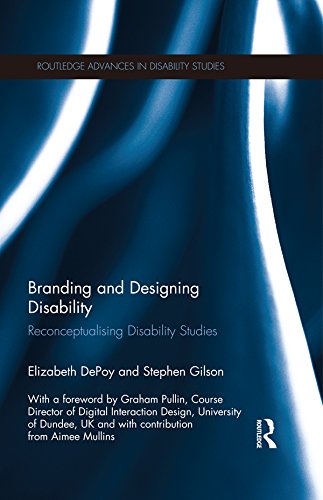 Over the past fifty years, design and branding have become omnipotent in the market and have made their way to other domains as well. Given their potential to divide humans into categories and label their worth and value, design and branding can wield immense but currently unharnessed powers of social change. Groups designed as devalued can be undesigned, redesigned and rebranded to seamlessly and equivalently participate in community, work and civic life. This innovative book argues that disability as a concept and category is created, reified, and segregated through current design and branding that begs for creative change.
Over the past fifty years, design and branding have become omnipotent in the market and have made their way to other domains as well. Given their potential to divide humans into categories and label their worth and value, design and branding can wield immense but currently unharnessed powers of social change. Groups designed as devalued can be undesigned, redesigned and rebranded to seamlessly and equivalently participate in community, work and civic life. This innovative book argues that disability as a concept and category is created, reified, and segregated through current design and branding that begs for creative change.
Transcending models of disability that locate it either as an embodied medical condition or as a socially constructed entity, this book challenges the very existence and usefulness of the category itself. Proposing and illustrating creative and responsible design, DePoy and Gilson include thinking and action strategies that are useful and potent for "undesigning", redesigning, and rebranding to meet the full range of human needs and to enhance full participation in local through global communities. Divided into two parts, the first section presents a critical examination of disability as a designed and branded phenomenon, exploring what exactly is being designed and branded and how. The second part investigates the redesign of disability and provides principles for redesign and rebranding illustrated with examples from high-tech to place-based sustainable strategies.
The book provides a unique and contemporary framework for thinking about disability as well as providing relevant design and branding guidance to designers and engineers interested in embodiment issues. - Publisher's Description
Request this Title
Blindness and Writing: From Wordsworth to Gissing
Tilley, Heather (2017)
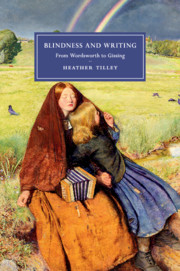 In this innovative and important study, Heather Tilley examines the huge shifts that took place in the experience and conceptualisation of blindness during the nineteenth century, and demonstrates how new writing technologies for blind people had transformative effects on literary culture. Considering the ways in which visually-impaired people used textual means to shape their own identities, the book argues that blindness was also a significant trope through which writers reflected on the act of crafting literary form. Supported by an illuminating range of archival material (including unpublished letters from Wordsworth's circle, early ophthalmologic texts, embossed books, and autobiographies) this is a rich account of blind people's experience, and reveals the close, and often surprising personal engagement that canonical writers had with visual impairment. Drawing on the insights of disability studies and cultural phenomenology, Tilley highlights the importance of attending to embodied experience in the production and consumption of texts. - Publisher's Description
In this innovative and important study, Heather Tilley examines the huge shifts that took place in the experience and conceptualisation of blindness during the nineteenth century, and demonstrates how new writing technologies for blind people had transformative effects on literary culture. Considering the ways in which visually-impaired people used textual means to shape their own identities, the book argues that blindness was also a significant trope through which writers reflected on the act of crafting literary form. Supported by an illuminating range of archival material (including unpublished letters from Wordsworth's circle, early ophthalmologic texts, embossed books, and autobiographies) this is a rich account of blind people's experience, and reveals the close, and often surprising personal engagement that canonical writers had with visual impairment. Drawing on the insights of disability studies and cultural phenomenology, Tilley highlights the importance of attending to embodied experience in the production and consumption of texts. - Publisher's Description
Request this Title
Employees with Aided Hearing Impairment: An Interdisciplinary Perspective
Hua, Håkan (2014)
 The main findings of this thesis demonstrate that there is a need for extensive services for employees with HI even after a HA fitting. This thesis therefore emphasizes the importance of identifying the need for assistive listening devices, examining the room acoustics of the individual’s work setting and providing the workplace with information about the consequences of having a HI in order to facilitate communication at work. The latter is especially important as colleagues showing support and employers making adjustments at the workplace (technically or acoustically) are facilitating factors that would benefit both employees with HI and those with normal hearing. Additional research should focus on including and comparing other types of cognitive tests, work-related noises and working tasks. More research is also needed to unravel the complex area of research between factors such as cognitive processes, hearing and effort. - Abstract
The main findings of this thesis demonstrate that there is a need for extensive services for employees with HI even after a HA fitting. This thesis therefore emphasizes the importance of identifying the need for assistive listening devices, examining the room acoustics of the individual’s work setting and providing the workplace with information about the consequences of having a HI in order to facilitate communication at work. The latter is especially important as colleagues showing support and employers making adjustments at the workplace (technically or acoustically) are facilitating factors that would benefit both employees with HI and those with normal hearing. Additional research should focus on including and comparing other types of cognitive tests, work-related noises and working tasks. More research is also needed to unravel the complex area of research between factors such as cognitive processes, hearing and effort. - Abstract
Request this Title
Deafness and Hearing Impairment
Naff, Clay Farris (2010)
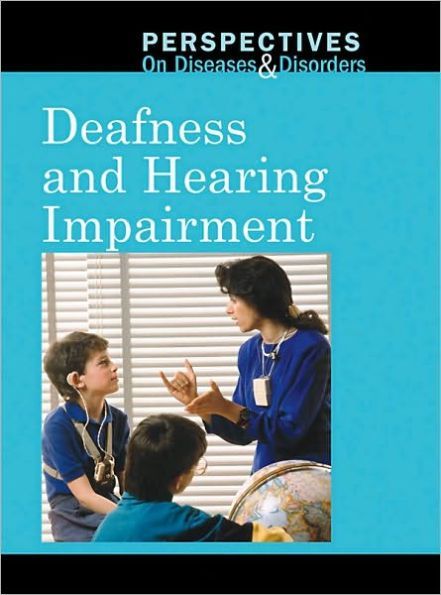 The ailments and conditions that afflict people today can be confusing, disturbing, and painful - both emotionally and physically. The Perspectives on Diseases and Disorders series provides clear, careful explanations that offer readers and researchers insight into what these conditions are, what causes them, how people live with them, and the latest about treatment and prevention. All volumes in the series include primary and secondary viewpoints, bibliographies, detailed indexes, and lists of organizations to contact for additional information. - Publisher's Description
The ailments and conditions that afflict people today can be confusing, disturbing, and painful - both emotionally and physically. The Perspectives on Diseases and Disorders series provides clear, careful explanations that offer readers and researchers insight into what these conditions are, what causes them, how people live with them, and the latest about treatment and prevention. All volumes in the series include primary and secondary viewpoints, bibliographies, detailed indexes, and lists of organizations to contact for additional information. - Publisher's Description
Request this Title
Assistive Technology for Blindness and Low Vision
Manduchi, Roberto.; Kurniawan, Sri (2013)
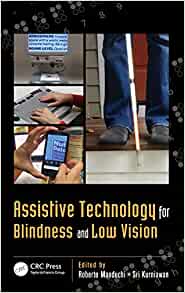 This book provides a comprehensive overview of the current state of the art in assistive technology for persons with visual impairment, as well as extensive coverage into promising new research directions. Beginning with a brief overview of the psychopathology of low vision and blindness, the text proceeds with in-depth descriptions of current technology to support independent mobility and orientation, information access (printed information, tactile information, and computers), and life activities (education, work, entertainment), as well as future directions related to the technology for blindness and visual impairment. - Publisher's Description
This book provides a comprehensive overview of the current state of the art in assistive technology for persons with visual impairment, as well as extensive coverage into promising new research directions. Beginning with a brief overview of the psychopathology of low vision and blindness, the text proceeds with in-depth descriptions of current technology to support independent mobility and orientation, information access (printed information, tactile information, and computers), and life activities (education, work, entertainment), as well as future directions related to the technology for blindness and visual impairment. - Publisher's Description
Request this Title
